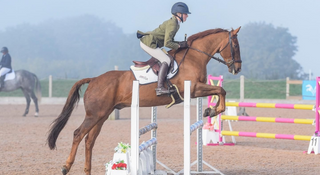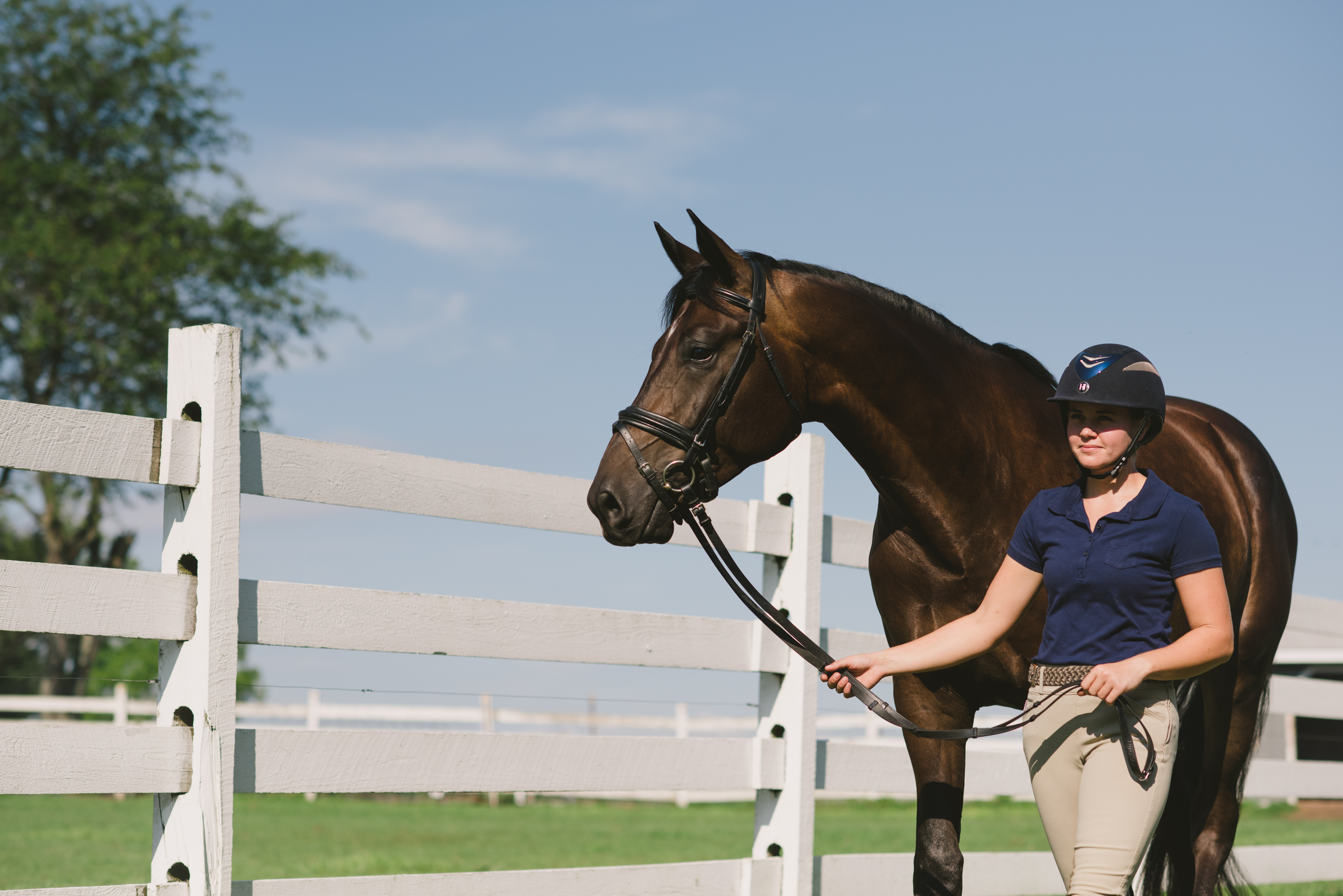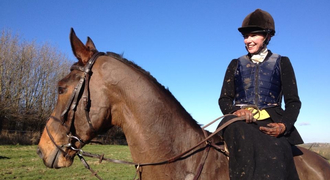
Importance of The Pony Club
Abbie Burbidge explains why The Pony Club is so important to her life and her career with horses
23 November 2021
Read More
Retraining a racehorse: finding the right horse and getting him home
Retraining a racehorse to become a leisure or competition horse can be very rewarding and enjoyable. Here are some tips and pointers to consider, to help you choose the right horse and introduce him or her to their new life as smoothly as possible.
Life as a racehorse
The first thing to consider is how life has been as a racehorse and how this might impact him or her in their new life.
Racehorses generally have a very structured day with set times for feed, exercise and down time. They are almost always exercised first thing in the morning so don’t be surprised if your new arrival is wide awake and raring to go when you arrive at the stables! They may or may not have had daily turnout depending on the type of yard they were on and they will always have lived with plenty of equine company around them, including when exercised.
When they arrive at a new home life can seem very different to them. With careful consideration and some simple planning, however, there is no reason why most racehorses can’t make a successful career change.
Choosing the right partner
Having decided to embark on this journey with a racehorse, step one is check that you have the necessary skills, time and support. If you haven’t retrained a horse before, check you have a trainer or suitably experienced advisor to help and guide you. Be honest with yourself about your strengths and weaknesses and then try to find a horse suitable for you. A flat racehorse is likely to be smaller and often younger than a national hunt horse who may be older and wiser but will still need time to adjust. At this point it is a good idea to speak with the racehorse trainer and grooms about your potential partner’s personality and temperament; they are used to dealing with him daily and will know him well.
If you are using a rehoming centre you can discuss what you are looking for and they may have a choice of horses available. For the less experienced this can be a better option than direct from a trainer as they will offer advice and will have begun the retraining process.
It is also a good idea to have in mind your future plans for your new horse; a potential dressage horse or event horse would need to be more athletic than a general leisure/hacking horse. In all cases the more correct his conformation (the way he is put together) the more likely he will be to stay sound throughout his life. Also consider if any old injuries could cause problems in the future.
Getting your new horse home
Biosecurity is important with any new horse and your racehorse is no different. Check his vaccinations are up to date and it is a good idea to isolate all new arrivals and follow normal biosecurity procedures. Check out our Biosecurity blog for more details.
Your new horse will also need to be wormed or have a worm egg count done-find out more here
A change of home can be a stressful time for any horse, but some pre-planning will help. Your racehorse will be used to a very routine life and also to having lots of horses around, so if your new ex-racehorse is being isolated for biosecurity reasons, ensure that he can see other horses. If possible, try to keep him and his neighbours in the same routine too.
TIP: Even if you are on a DIY yard, try to get together with friends and feed the horses at the same time – your racehorse will be used to this and may become stressed if his routine is different from the other horses. The same applies to turnout. Establish a routine that you can keep to.
Feeding: he will need access to plenty of fibre such as ad-lib meadow hay but will no longer need the high energy feed that he is likely to have had when racing. Choose a low energy, high fibre cube, mix or balancer. It can be helpful to contact a feed company to seek advice if you are unsure.
Settling in and turnout
Turnout is generally a good idea if weather conditions and facilities allow, unless the horse has restrictions due to previous injury. It will give him time to relax and just ‘be a horse’ but it may be something he will need to get used to; it is not unusual for many racehorses to have been permanently stabled during their racing career or given access to a small turnout pen to have a roll. Introduce his turnout and access to grass carefully starting with a couple of hours and gradually extending the time. He may also feel the cold more than other horses and need rugging accordingly.
Tip: Finding him a calm companion who will quietly graze will be a big help and encourage him to settle. Also it’s a good idea to pick a quiet time on the yard for his first turnout, when there are not too many people or horses coming or going.
Most horses will adapt quickly and we often then decide to turn our ex-racers away for a couple of months to chill out, relax and become ‘normal’ horses before we start their education. Like humans all are individuals with different personalities so it is important to assess each one’s needs, but some time off allows them to ‘letdown’ physically and mentally especially if straight out of racing and very fit. This may not be possible in winter or if previous injuries restrict things.
Next, check out Juliet’s blog on retraining a racehorse: starting their new education under saddle
MM-17029

Abbie Burbidge explains why The Pony Club is so important to her life and her career with horses
23 November 2021
Read More
If you are planning to bring your horse back into work after time off during lockdown it pays to be prepared and to take things sl...
15 June 2020
Read More
Our latest HorseDialog guest blogger Dr Aoife Byrne is an equine vet and an intrepid side saddle rider. Here she explains the hist...
06 November 2018
Read More